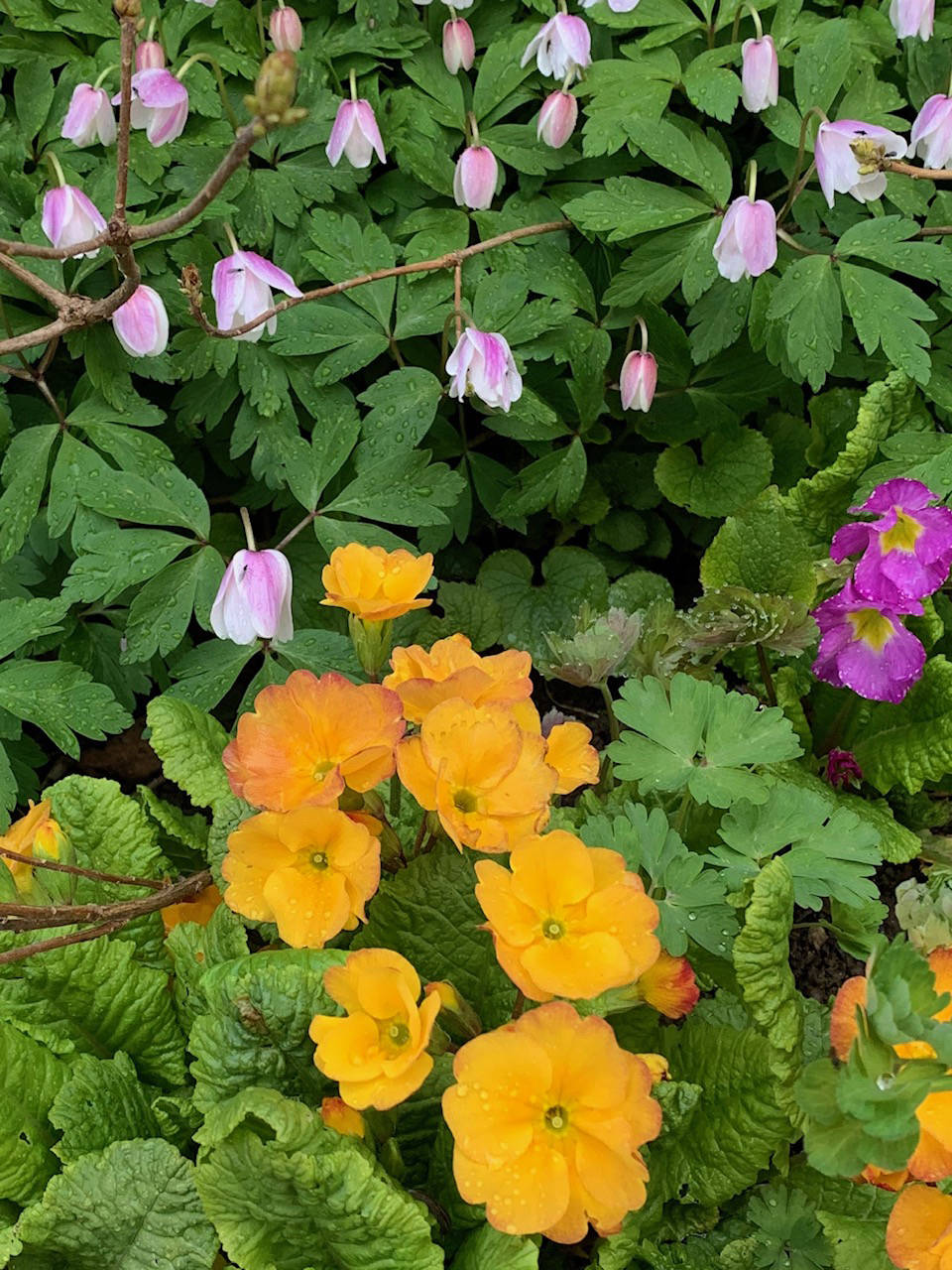On the drive to Anchorage about 10 days ago, it was fascinating to observe the leaf emergence on the birch, alder and willow. With each variation in elevation, the leaves were at different stages of welcoming spring. We don’t want to live in Turnagain Pass.
The Subaru dealership has medians in their parking lot, filled with rocks and — wait for it — forsythia. Why ever did “they” plant forsythia in a parking lot? A whole row of them, some in better condition then others, the ones still alive in bloom. But they bloom for about 10 days. What will happen next? Nothing. Just very unimpressive twiggy shrubs. Forsythia needs company and in the Subaru parking lot they have no friends. They are to be pitied.
This, somehow, brings me to mock orange, that most elegant, bloomy of shrubs that thrive here in the Far North even though they are a zone 4. I was at Betsy’s house and she has several planted right up against her entry deck, much too close for these lovelies to really reach their potential. They have a splendid arching habit. Well, there they are and Betsy’s answer to this is to cut them down to about 3 feet tall every year. The very thought of this took my breath away. But, and this is a big but, they thrive, returning every year to bloom like mad. Go figure. Even though my three are planted too close to the house and deck I will not cut them down. Two of them are about 12 feet tall and have been in place for almost 20 years. The third was not purchased at the same nursery and, although it had a tag that said it was the same variety, it is shorter and bushier. All three bloom with exuberance. If you don’t have one or three of these, give them some serious thought.
When purchasing trees and shrubs it is so very necessary to pay attention to the mature dimensions of the plant. Everything here is planted too close either to each other or the house. Pay attention and believe.
Then I was at Lori’s this afternoon and she has a blank slate, an opportunity. She has a small bed marked out with rocks (she likes rocks) that, when filled with perennials, will welcome her home each and every time she drives or walks in. Excellent. She knows what she wants but needed to hear herself say it. And when I pointed out the flaw of rocks (weeds between them) she said “but I like rocks” and there you have it. It is her garden and she will have what she wants and rocks it is. I then suggested a weed burner, the greatest tool to enter my life.
But the point here is this is Lori’s garden, neither mine nor yours. It isn’t for competition; it will exist to make her heart sing, just like yours will do for you.
But at the moment my heart is not singing. I have never seen so much chickweed in the perennial beds as I have this spring. They are covered. All the volunteer annuals are having a tough time being noticed, and I really need to notice because they are integral to the over all look that I’m after.
I can’t define what that “look” is. There just needs to be lots of blooms all season. I need color. These beds are established and there really isn’t much more that will fit into them, but I try. This year I attempted to cut back on the number of annuals that I introduce each season to the perennial beds. I thought this would make my life easier. No. I ended up making trips to our excellent nurseries. I’m right back with too much of everything. My plan was to give all the plants, perennial as well as annual, enough room to realize their potential rather than being crammed in together. I was after air circulation, I think. Well, so much for that.
Enough about flowers, on to vegetables. The food plot is looking productive already. The whole shebang is covered with floating row cover. Really, I’ve tried to go without and the results of that experiment were sad indeed. The edges are pinned down so it’s easy to take a peek and see what’s going on. The peas are rather spectacular, spinach, chard, lettuce, radish, beets, carrots. Those were all planted from seed. The seedlings — broccoli, red cabbage (no slugs), romanesque cauliflower, graffiti cauliflower, artichokes, royal burgundy beans, two kinds of onions, shallots, leeks — are being tolerant of the cool, misty-moisty weather. The potatoes won’t show for weeks, but they are in and covered. The fall planted garlic is gorgeous.
The greenhouse is a marvel. It has been too cold in there all season. We are struggling with our heating system and the temperature is dropping too low. I would like to keep it no lower than 40 degrees but that hasn’t been the case. In spite of this the Sakura tomato (that I have Sunrise to thank for introducing me to) has already set fruit. Sungold, Black Japanese Trefele (in spite of the name, it’s Russian), Brandywine and this year’s new one, Chocolate Pear, are all looking great. The cucumbers are beautiful but stalled. I need them to get going and if they were warmer they would.
I don’t know what the statistics are, but this seems like a cold May to me. I have been diligent if unimaginative about using plants that will tolerate our sub-Arctic climate and they are all answering the call of adversity. So be it. May we all be so tolerant.
Rosemary Fitzpatrick is a longtime Homer gardener and has been writing Kachemak Gardener since 1990.


